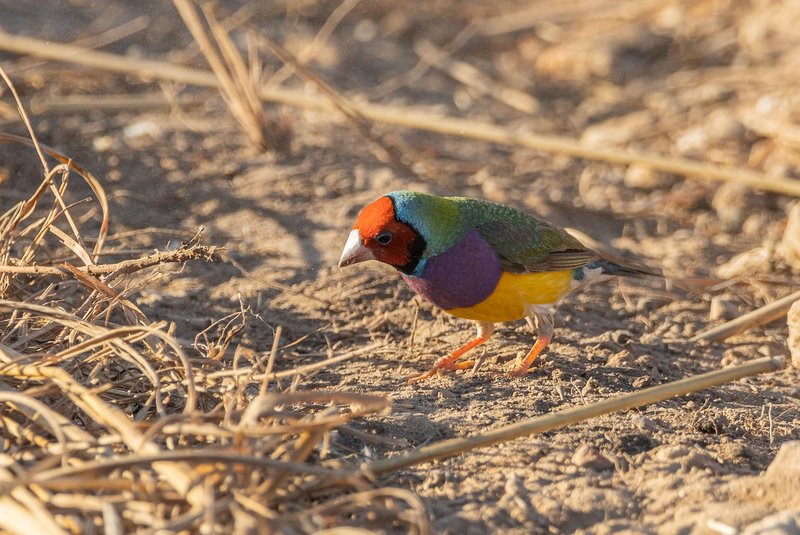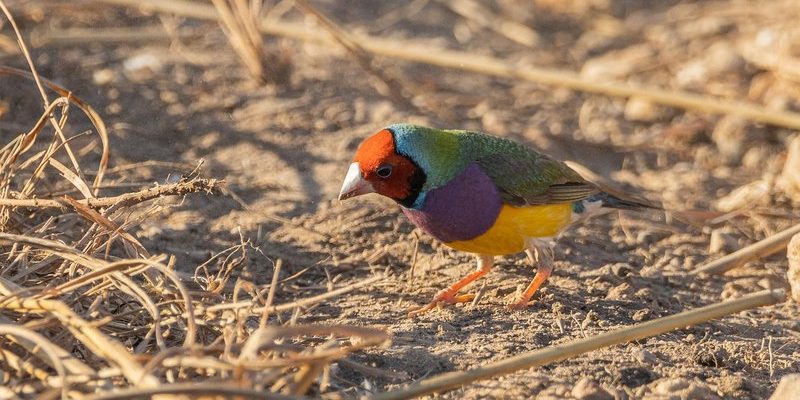
> To truly appreciate the Gouldian Finch, you should know a bit about where they come from. Native to the woodlands and grasslands of Australia, these finches are known for their striking plumage and social behavior. Understanding their nesting habits is crucial not just for bird enthusiasts but also for anyone interested in wildlife conservation and appreciation.
Let’s dive into the world of the Gouldian Finch and unravel the secrets of their nesting behaviors and lifecycle. You might be wondering how they reproduce, what their eggs look like, and how baby finches grow up. I’ll cover everything you need to know, step by step.
Understanding Gouldian Finches: A Brief Overview
Gouldian Finches, also known as *Erythrura gouldiae*, are small, vibrant birds that usually measure around 4.5 to 5.5 inches in length. Their dazzling colors, which can include bright green, yellow, blue, and red, make them popular among bird enthusiasts. Here’s the thing: these birds are not just pretty faces. They exhibit fascinating social behaviors, often living in flocks and forming strong bonds with one another.
These finches usually thrive in habitats that include eucalypt woodlands and grasslands. They’re mostly found in northern Australia, where they flit around in search of seeds, their primary food source. When it’s time to nest, they look for secure spots—like tree hollows or dense grasses—where they can raise their young safely.
Gouldian Finches are not just beautiful; they also play an important role in their ecosystem. By feeding on seeds, they help control plant growth, promoting a healthy balance in their habitat. Their lively songs fill the air, adding a joyful soundtrack to the Australian landscape.
Nesting Habits of Gouldian Finches
When it comes to nesting, Gouldian Finches are quite particular. They generally build their nests in tree hollows, often choosing the ones created by termites or other birds. This natural architecture provides them with a safe environment to raise their chicks. You might think of it like choosing a cozy home in a bustling neighborhood—it needs to be secure and comfortable.
Gouldian Finches usually build their nests with soft materials, like grasses, feathers, and leaves. These materials not only keep the nest cozy but also help regulate the temperature. The female is primarily responsible for constructing the nest, while the male keeps an eye on their territory, ensuring that no unwanted guests disturb their cozy abode.
What’s interesting is that Gouldian Finches often nest in colonies. They might occupy several nests in close proximity to one another. This social behavior offers extra protection against predators and creates a vibrant community atmosphere. Imagine living in a friendly neighborhood where everyone watches out for each other!
The Gouldian Finch Mating Ritual
Mating season for Gouldian Finches usually occurs during the wet season, which runs from late October to early March. The males get quite creative during this time, displaying their vibrant feathers and singing melodious songs to attract females. Honestly, it’s like a colorful talent show, where the males put on their best performances to win the hearts of the ladies.
Once a male impresses a female, they engage in a courtship dance that is captivating to witness. The male will hop around, puffing up his feathers, and might even feed the female to further woo her. After a successful courtship, the female will then choose a mate, and they will begin nesting together.
You might be wondering how many eggs they lay. Typically, a female will lay between 3 to 7 eggs per clutch. These eggs are usually a pale, speckled color, blending into the nesting materials, offering extra protection against potential threats. After laying the eggs, the female sits on them to keep them warm and safe, while the male brings her food during this critical time.
Incubation Period and Hatching
The incubation period for Gouldian Finch eggs lasts about 11 to 14 days. During this time, the female remains dedicated to her eggs, keeping them warm and turning them regularly. It’s like waiting for a special surprise to arrive, filled with a mix of excitement and nervous anticipation.
When the eggs finally hatch, the tiny chicks are altricial, meaning they are born helpless, with closed eyes and no feathers. At this stage, they rely entirely on their parents for warmth and nutrition. Here’s where the teamwork kicks in—both the male and female finches share the responsibility of feeding their chicks.
The parents feed the chicks a diet rich in seeds and insects, providing the essential nutrients needed for healthy growth. Over time, the chicks grow rapidly, developing feathers and gaining strength. It’s a beautiful process to witness, as these small, vulnerable creatures begin to transform into the vibrant birds they’re meant to be.
Life After Hatching: Fledging and Independence
After about 3 to 4 weeks, the young Gouldian Finches begin to fledge, meaning they start to leave the nest. This is an exciting milestone—isn’t it thrilling to watch someone take their first leap into the world? As they start to explore their surroundings, their parents continue to provide food and guidance.
During this fledging stage, the young finches practice flapping their wings, getting comfortable with flying, and honing their skills. They often stay close to their parents, learning how to forage for food and navigate their habitat. It’s a little like learning to ride a bike—you’ve got to take small, wobbly steps before you can zoom off on your own!
Eventually, these young finches reach independence, typically around 6 to 8 weeks after hatching. Once they’re capable of feeding themselves, they may start to join other flocks, continuing the cycle of life. By this point, they’ve become beautiful, vibrant additions to the scenery, taking their place in the wild.
Challenges of the Gouldian Finch Lifecycle
While Gouldian Finches have a fascinating lifecycle, they also face several challenges in the wild. Habitat loss, due to human activities like deforestation, poses a significant threat to their populations. Furthermore, changes in climate can affect their breeding cycles and food sources. It’s a bit like trying to adapt to a new routine in life—sometimes, it just doesn’t go as planned.
Another concern is the presence of predators. Eggs and chicks are especially vulnerable to snakes, monitor lizards, and even larger birds. The colony nesting behavior certainly helps, but the risk is still there. Parents take turns guarding the nest to protect their young, trying to stay one step ahead of potential threats.
Conservation efforts are essential to ensure the survival of Gouldian Finches. Organizations work hard to protect their habitats and establish breeding programs, helping to maintain healthy populations. Understanding their lifecycle is vital, as it allows us to appreciate their needs and the steps we can take to support them.
Learning about the nesting habits and lifecycle of Gouldian Finches gives us a glimpse into the beauty of nature and the delicate balance of life. These birds remind us of the importance of community, the joy of nurturing, and the thrill of new beginnings.
So, whether you’re a seasoned birdwatcher or just starting your journey into ornithology, take a moment to appreciate the vibrant lives of Gouldian Finches. Their story is one of resilience, beauty, and connection—much like the world we all inhabit. Now that you know more about these charming little creatures, perhaps you’ll think of them the next time you hear a cheerful bird song in the morning.

